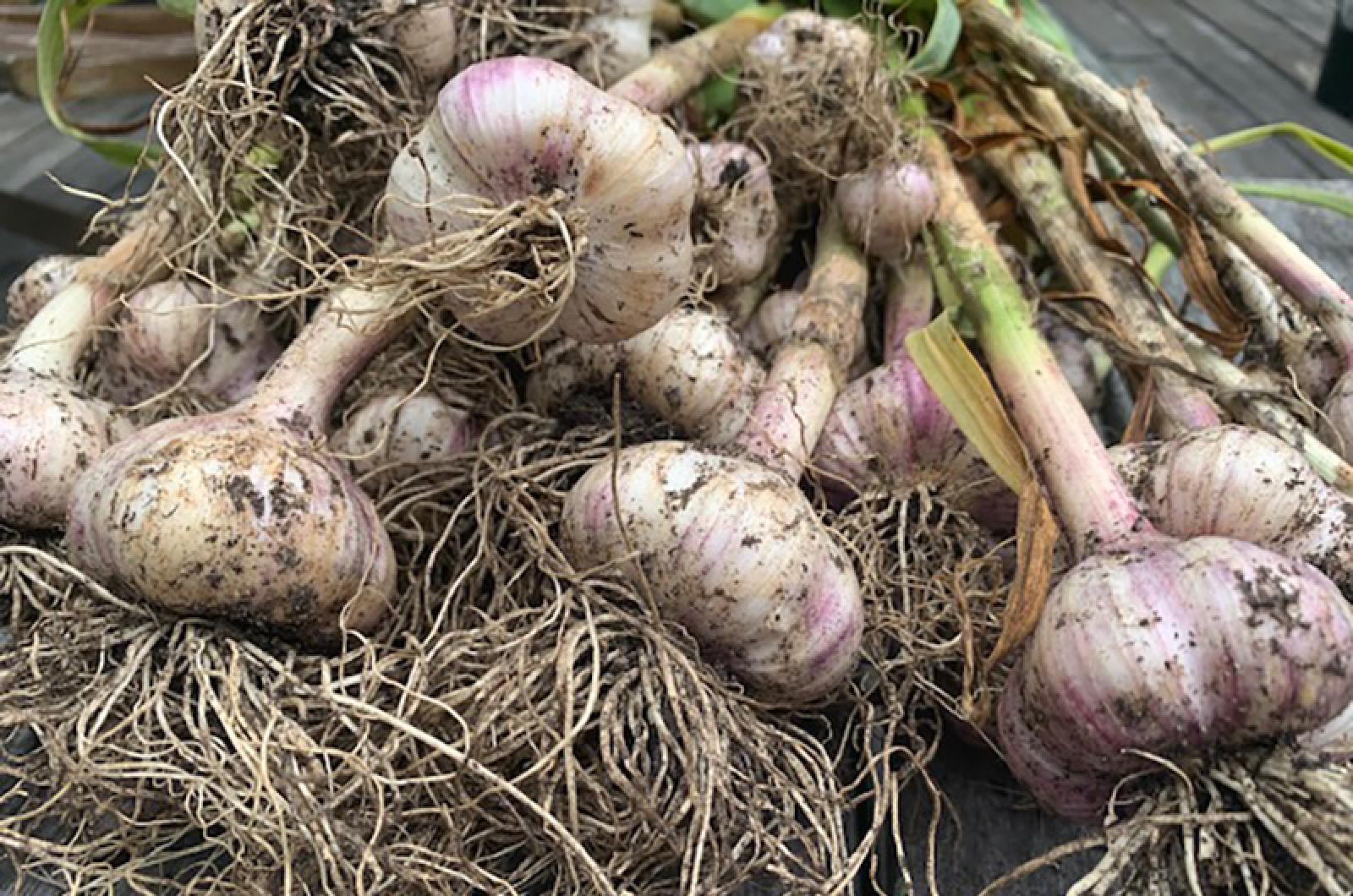My garden doesn’t stink even if my breath will.
Blame it on a healthy harvest of garlic. Maybe this year’s burst of beautiful bulbs is the result of good soil, plentiful water, and a sunny disposition. Or perhaps the success is because of the proximity of the garden column, just on the other side of the page. Lynne Irons’s talents — in writing and in growing — must be rubbing off on me and my gardens.
Whatever the reason, I am happily awash in alliums. Allium is the genus of plants that includes garlic, as well as onions, scallions, leeks, chives and shallots, among others. There are wild varieties and cultivated ones, an assortment of Island alliums. The commonly cultivated one that can escape cultivation is Allium sativum. Another, Allium vineale, is a weedy perennial.
My summer bounty is, hopefully, only the beginning. With this triumph and an accompaniment of parsley, which is known to mitigate the garlic breath, I will join the cult of clove lovers and carefully select and replant the best ones in the fall, leading annually to a bigger and bigger harvest. A unique attribute of garlic is that it is planted in the fall, overwinters, and then is harvested in the middle of summer.
This vegetative reproduction or cloning is not the only way to grow garlic. Tom Hodgson, master gardener and sharer of all things growable, introduced me to garlic bulbils last weekend. His were from elephant garlic, which is as big as it sounds. His stories of garlic grandiosity and burgeoning bulbils intrigued me and he encouraged me to take some bulbils and try to grow my own giant stock.
Bulbils are small, undivided bulbs that emerge from the end of a garlic scape (the curled shaft that arises from the center of the garlic stem). Usually, one would cut off the scape to allow the plants’ energy to focus on the below-ground bulb. However, if left uncut, the scape blossoms into a flower-like mass of these little bulblets. These reproductive parts are only for show since cross-pollination of them is not possible.
These little loves are only for those with a long-term garlic vision. It takes a few years and successive plantings for the bulbils to produce a plant that has the multi-cloved garlic bulb that we all know and love.
Don’t try this with just any garlic. Take heed in your choice, as not all garlic bulbs will produce bulbils. Only hard-necked garlic varieties yield them, and not the supermarket kind, which are usually soft-necked garlic.
More than 75 percent of the world’s garlic is produced in China. So stay rooted: there is no better time and definitely a better taste to going local and growing your own. Grab a farm-grown bulb, share a neighbor’s bulb bounty, or save some bulbs you rooted out last year. They can reward you tenfold — as each bulb can contain that many cloves.
Suzan Bellincampi is islands director for Felix Neck Wildlife Sanctuary in Edgartown and the Nantucket Wildlife Sanctuaries. She is also the author of Martha’s Vineyard: A Field Guide to Island Nature and The Nature of Martha’s Vineyard.




Comments
Comment policy »